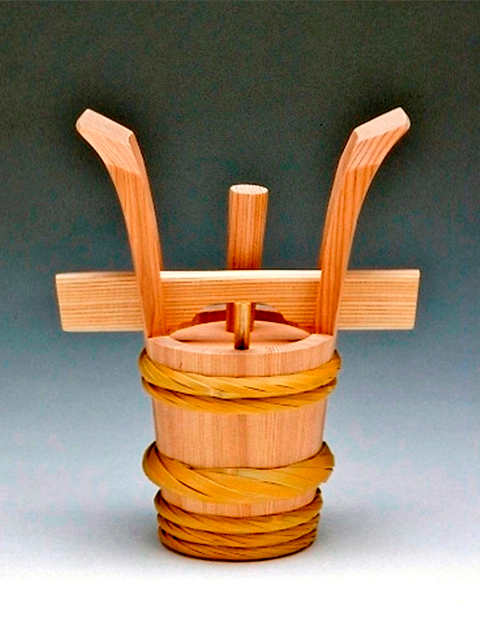AKITA Sugi Oke Taru (Cedar Cooperage)

Elements of tubs from the 15th and 16th centuries have been discovered at the ruins of Akita castle. Records dating from the beginning of the 17th century kept by one of the old families of the Akita clan indicate that tubs were being used at a sake brewery in present-day district of Ogatsu-cho.
There are also 19th century examples of barrels and tubs preserved by the Aoyagi family of another district, Kakunodate-cho that have a modern shape, a coating of lacquer and both copper and bamboo bands.
The wood from the local cedar trees has a fine straight grain and an appealing scent and, because the wood moves so little, it is not prone to distortion. The superb quality of the wood contributes to the warmth of the resulting products, bringing both charm and a sense of quality to the lives of those who use these tubs and barrels. The scent of the wood is characteristic of items including bathtubs, rice tubs, sushi tubs, beer tankards and sake flasks. The wood provides other benefits for flower vases, candy tubs and umbrella stands.
Feature
Akita cedar wood is an excellent crafting material because, in addition to its fine annual tree rings, natural beauty and rich scent, it is stretch- and shrink-resistant, meaning the finished product has few if any defects. Buckets made of Akita cedar wood bring a rich warmth to everyday life.
How to make
The method for producing a barrel is divided into six stages. The slats (kure) are fashioned from narrow, straight-grained boards. Special inner and outer lathes are then used to shape the boards. After the slats are stood in the shape of a barrel, the outer bamboo hoops are bound, and the bottom and top are set. The wooden base is then polished and finished with a coating made from resin or persimmon tannin.

